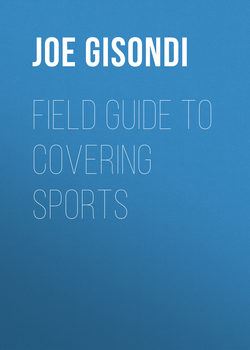Читать книгу Field Guide to Covering Sports - Joe Gisondi - Страница 30
На сайте Литреса книга снята с продажи.
Language
ОглавлениеPaint a picture. Let readers see what happened. Don’t write that a tailback scored on a 25-yard run, something anybody can write from reading a box score. Instead, show how the tailback made it into the end zone.
Let readers see key passes: “The key play was Cutler’s 38-yard pass to lanky receiver Devin Aromashodu. Cutler perfectly placed the pass as Aromashodu stretched out in front of Giants cornerback Bruce Johnson. It gave the Bears first-and-goal from the 1.”22
Vivid language also enables readers to visualize key plays like this: “That’s when Stroughter, the 233rd pick in April, took over. He took a kickoff at the 5, spun out of some tackles and raced down the sideline until he was pushed out of bounds at the Jaguars 20. Two plays later, McCown fired a 17-yard touchdown to tight end Jerramy Stevens.”23
Notice the active verbs used in both passages above—stretched, raced, pushed and fired. These verbs enable the reader to more clearly imagine what happened. Avoid passive voice—avoid using was, were, is, and are, because the resulting wordier constructions often replace or weaken more visual verbs.
In addition, vary sentences for style and length. Mix longer sentences with shorter ones. Insert phrases and clauses at the beginning, middle, and end of sentences—although not all at once. Don’t lull readers to sleep with sentences that all sound the same, sort of like the tide rhythmically slapping against the side of a dock. On the other hand, too many short, rapid-fire sentences can jolt readers. Take chances, try different punctuation: Do whatever it takes to grab readers’ attention (and retain it throughout the story).
